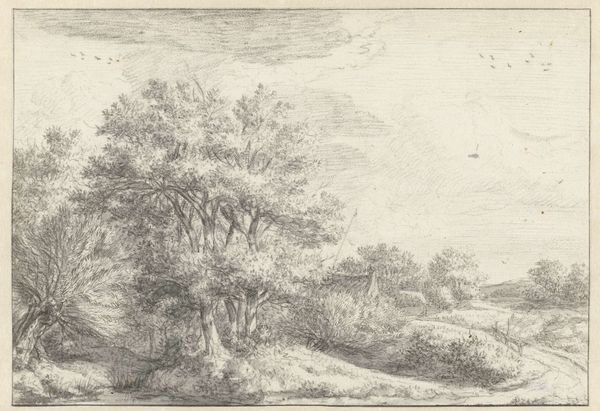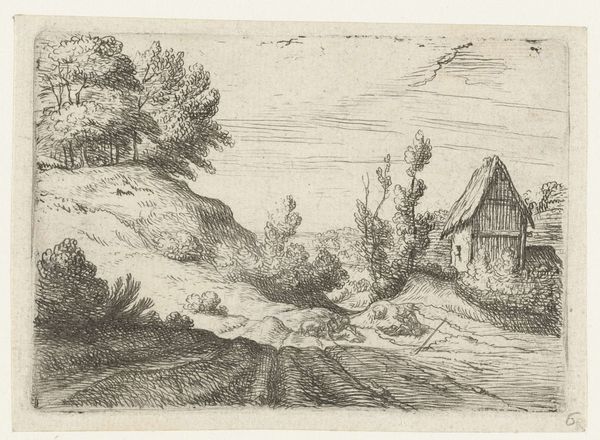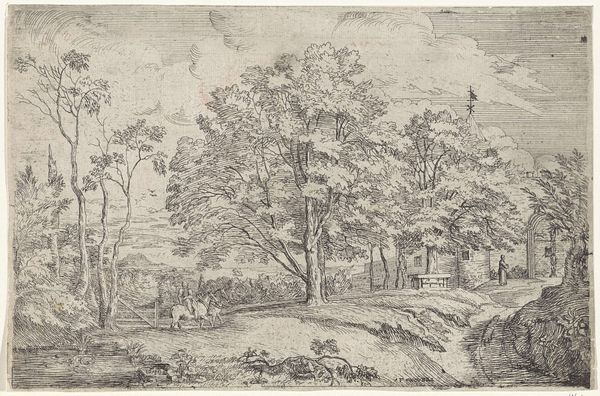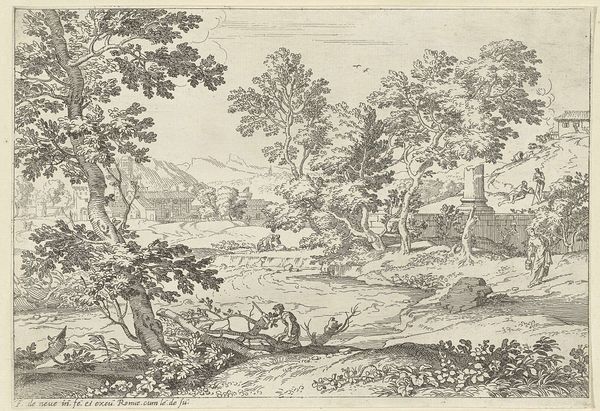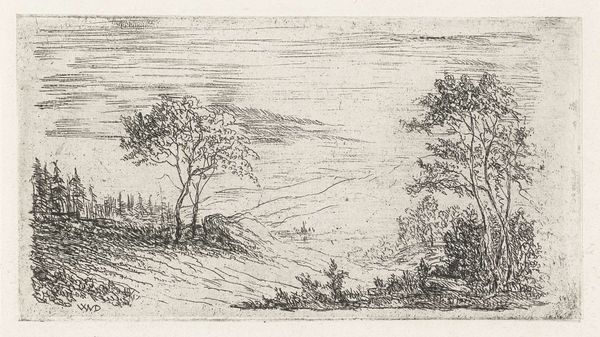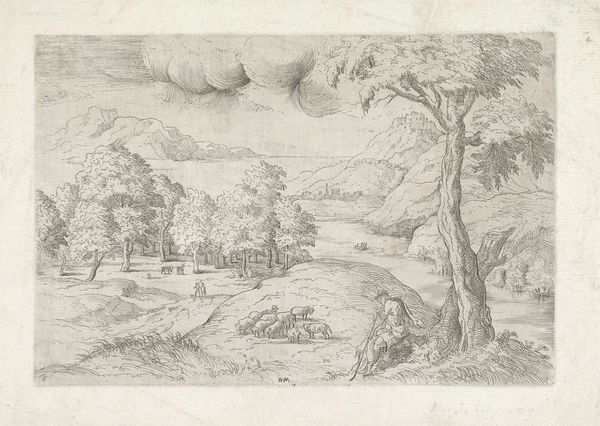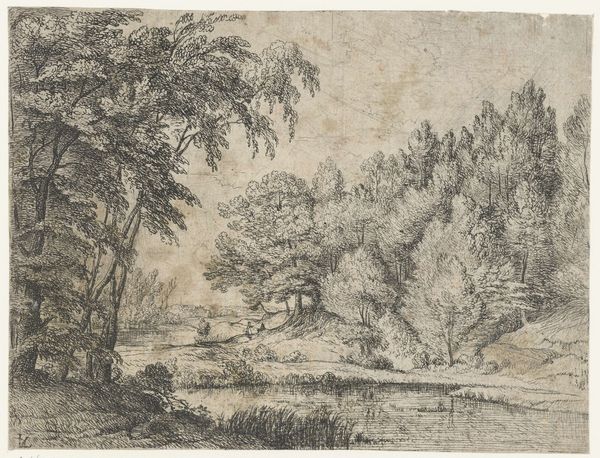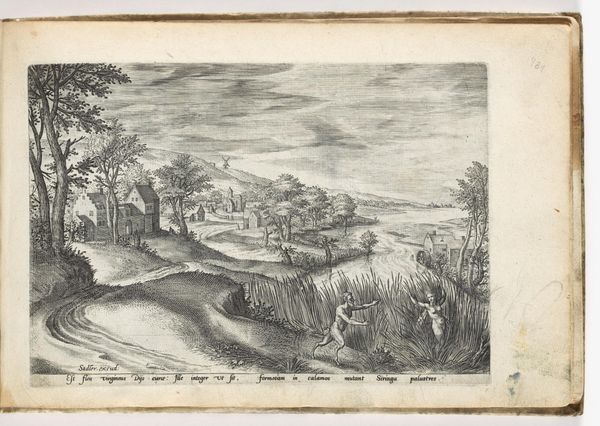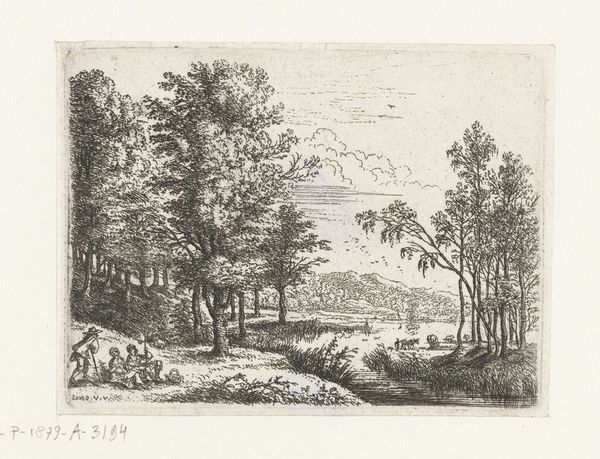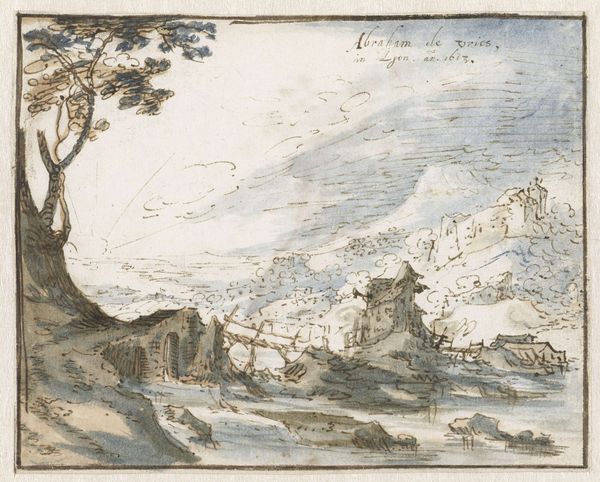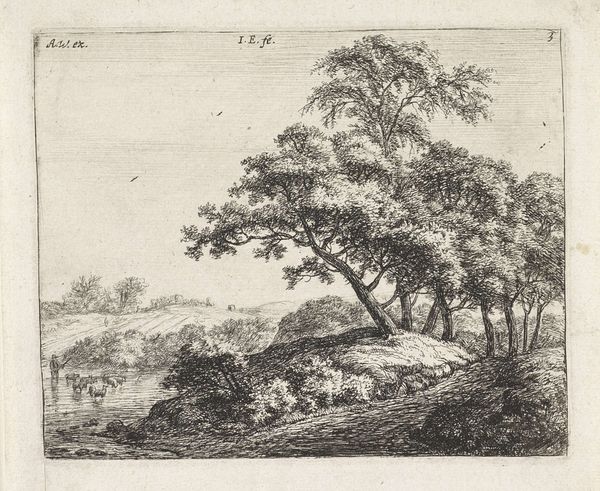
drawing, etching
#
drawing
#
baroque
#
dutch-golden-age
#
etching
#
landscape
#
etching
Dimensions: height 71 mm, width 100 mm
Copyright: Rijks Museum: Open Domain
Curator: Lodewijk de Vadder's etching, “House Next to a Hilltop Covered with Trees,” made sometime between 1615 and 1655, captures a moment deeply embedded in the sociopolitical landscape of the Dutch Golden Age. What's your immediate take on this scene? Editor: Immediately, it’s the texture that captures my attention. The varied line weights and the layering create such a palpable sense of depth. It is as though I could reach out and touch the roughness of that humble dwelling or the softness of the foliage. Curator: Absolutely. Vadder's skillful use of etching allowed him to render this landscape with a keen understanding of nature, a common pursuit among artists reflecting the era’s societal shifts towards secularism. The humble house becomes symbolic of the rising merchant class, establishing roots within a transformed social order. Editor: Semiotically, that humble dwelling does so much work in defining space! The architecture offers a stark geometric contrast to the wild growth, making the interplay of angles and curves a focal point in the otherwise unconstrained landscape. It gives structure to what could easily dissolve into chaos. Curator: And, from a critical perspective, consider how landscape art empowered a burgeoning sense of Dutch national identity. It visualized dominion, not in terms of military power but through an intimate portrayal of the local environment, affirming a cultural and political independence. The figure of the house may then echo a domestic revolution as much as anything else. Editor: A persuasive idea. Looking again, there's a tension introduced through the varying visual weight—the clustered trees command our eyes on the left and, fighting for our attention to the right, the tiny house—which tips the balance and creates a quiet dissonance. It suggests the peace isn't so peaceful after all. Curator: Such tension certainly encapsulates the lived experience of the time. The drive to depict a comforting landscape runs concurrently with the memory of the Eighty Years’ War. Here, the tension you mention becomes almost a melancholic recognition. Editor: Vadder certainly understood the expressive capacity of the etching medium. Its lines provide both clarity and depth. It makes me appreciate how technique shapes meaning and the feelings it elicits in us, viewers, even now. Curator: A beautiful point—tracing such visual details inevitably invites deeper insights into both art and our histories.
Comments
No comments
Be the first to comment and join the conversation on the ultimate creative platform.
